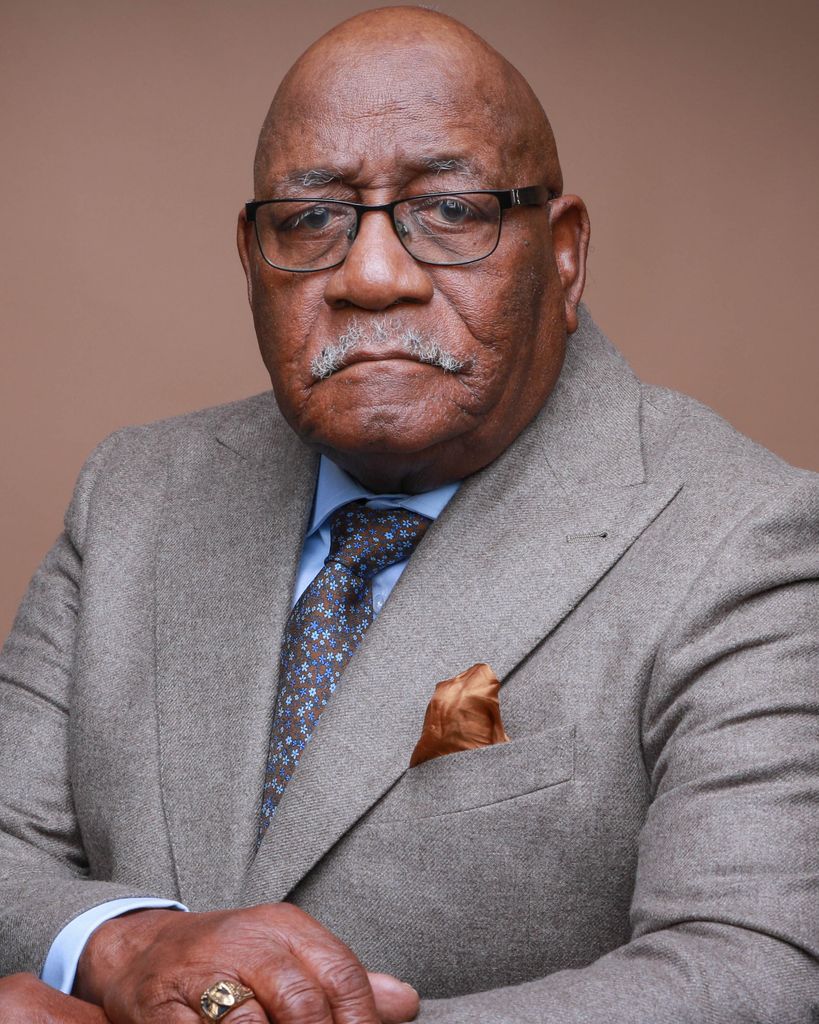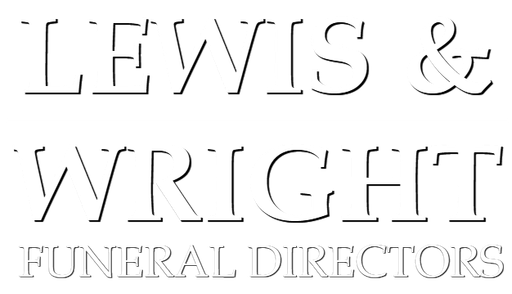16,
1934

28,
2025

John Lewis Bell, Jr. transitioned on Wednesday, May 28, 2025, at the age of 90, after a brief period of declining health. He was one of the last of his generation in the Bell family, which originates in Cheatham County, near Kingston Springs, in a post-Emancipation community called Belltown. The family began to migrate into Nashville during the early twentieth century, not unlike many others who lived in outlying rural areas at the time.
John was born on September 16, 1934, the youngest of four children of John Lewis, Sr., and the late Evelyn Eudora (Adkisson) Bell. The family lived in North Nashville and, while the children were still young, their mother died on August 23, 1936. Their father moved the family back to Belltown into the home of his mother, late Lucy (Stringfellow) Bell, whom they called “Mama Lucy.” The children also would spend several months each year with their maternal grandmother Rachel Chaney (Talley) Adkisson, “Mama Chaney,” in the Petway community near Ashland City. John, Sr. entered the U.S. Army during World War II and was killed in Europe on March 26, 1944. Within hours of learning of her son’s death, Mama Lucy also died tragically, in distress. The children returned to North Nashville to live with their paternal aunts, Mary Bell Hatchett and Emma Bell Williams, first on 19th Avenue North at Herman Street, and later at 1919 Patterson Street.
From that point on John, Jr. began to develop a vision for himself that would propel him to stride boldly and live out his greatest dreams. Unlike most young men of his race at the time, his vision was unimaginable as to what a person could accomplish during the difficult “Warring 1940s,” a decade blended with sorrow, patriotism, and hope for a new beginning.
In 1950, after seeing the movie Sands of Iwo Jima, J-Baby, as he was affectionately nicknamed, joined the United States Armed Forces at age 16. He served in a segregated unit of the U.S. Army in France, near the city of Bordeaux. There, he learned to drive and maneuver a truck, transporting goods for building his unit’s base there.
After being honorably discharged, he returned to Nashville and used his GI bill to pay his living expenses while finishing his education at Pearl High School (Class of 1957). Next, he studied history for two years at Tennessee State A&I College.
In the early 1960s, for a fleeting period, he sold insurance for North Carolina Mutual. Although he was outstanding in sales, it was not to his satisfaction. He also worked in retail in downtown Nashville at Kay Jewelry Store and Zibart’s Bookstore.
During this time, John met the love of his life, Ernestine Armstrong, who would soon become his wife. She was a secretary for civil rights attorneys and had clerked at the African Methodist Episcopal Church’s Christian Recorder national newspaper. John, then age 28, and Ernestine, age 23, married, and soon they began building their family: Natalie Renee (1962), Xavier Fitzgerald (1963), and Von Latreace (1967). Ernestine affectionately called John by his surname, “Bell,” and their friends who were “moving on up” in the era of social change in the “Swinging Sixties” also began to call him “Bell.”
His vision from his youth, of living boldly, like there was no limit to what he could accomplish burned like a bright star in his mind and heart. Unlike many of his contemporaries, his vision was unimaginable as to what a person could accomplish under the upending conditions of desegregation, which defined that period of history in our nation.
One sizzling summer afternoon in 1966, he was sitting in his den relaxing and listening to his radio when an advertisement echoed through the room. John’s vision of progress was activated: “You cannot get tomorrow’s jobs without today’s skills.” It was a message that would lead John immediately to the Employment Office to apply for one of those jobs.
New opportunities were opening under the Manpower Development and Training Act, which President John F. Kennedy had signed into law. Often considered a cornerstone of employment legislation, the program offered training and retraining of workers in technological advancements and was aided by the U.S. Employment Service.
The Manpower Program would take John back to Tennessee State University for nine months. During that time, he accumulated 1,400 hours in the theory of electricity. After graduating from the course, his vision would lead him to Huntsville, Alabama, to an industry called Haynes International, where he was hired in his first job as an aerospace worker.
At Haynes International, Mr. Bell was an exception to the rule because of his clever, penetrating mind with such technical craft, despite limited experience in the field.
Haynes International gave him excellent work experience that inspired him in the field of electronics. A year or so later, the company began to lay off workers, and John returned home to Nashville, vowing to never leave his family for work ever again.
One morning, he awoke, and a vision began to surge in his mind. He prepared himself as he left home, not knowing where this time he would stop for employment. So, on the morning of May 31, 1966, he stopped at AVCO Aerostructures Corporation, and that’s where his vision started to emerge and gain focus. He walked into the personnel office and said, “I am applying for a job in the electronics division.” That took guts! Few African Americans worked at AVCO then, and those who did were employed as floor sweepers.
Mr. Bell became the first Black person to apply for a professional electronics position in the young aerospace industry’s history at AVCO. During his first two years, he displayed such a performance on his various job assignments that he would be promoted to the top of his profession as an electrician in the maintenance division. While there, he took classes at night, earning an associate’s degree from Nashville State Technical Institute.
John was indeed the first African American extremely knowledgeable in the math and science of electronics to be employed in that capacity at the Avco Aerostructures Corporation. After 33 years of service to the company, he retired in 2003.
For the next two-and-a half decades, he lived in active retirement. His favorite adventures included hunting for game, such as deer and turkey, with his friends from the Nashville Sportsman Club. Founded in 1944 by a group of professional Black men, the club is one of the oldest and most active outdoor sportsmen’s organizations in Tennessee. Members make a point of including their families, as witnessed at their annual Fish Fry and Wild Game Dinners.
John especially enjoyed traveling, serving the community and reveling in the joy Prince Hall Masonic brotherhood. As did his friends in the 1960s, John’s Masonic friends knew him to be a highly jubilant person, always upbeat, yet undaunted, consistent. He had a quick-wit and was known for his stories and observations about people he had known or met. He’d tell a story and before you realized it was a joke, he’d start laughing. His was a deep, jolly laugh. Never did he have a down word to say. Ask him how he was doing, and he would always say, “Great!”
Life grew richer with age, and more and more he began to look forward to days when he could visit and celebrate holidays with his grandchildren, more recently with his great-grandchildren, all of whom knew him as “PawPaw Bell.”
John was preceded in death by his wife of 60 years, Ernestine, who died in 2022, as well as by two of his three siblings, Paul Bell and Evelyn Bell Quarles. His older sister Dorothy Bell Haley, at age 94, continues to thrive.
John leaves to cherish his memory: three adult children, Natalie R. Bell Sartin, Xavier F. (Nadine) Bell, and Von LaTreace Bell, Ed.D.; three grandsons, Leon Williams III, Xavier, Jr., and Brandon Bell; great-grandchildren, John Carter and Aubri Rose Bell, and Jordan Williams; sister, Dorothy Bell Haley; sister-in-law, Jean Armstrong-Lewis; nieces and nephews; his Berean Baptist Church family, who will forever remember him as Deacon Bell; and a plethora of friends.
NOTABLE ACCOMPLISHMENTS
• Korean War Veteran
• Organizing member at Berean Baptist Church (est. 1969); and the longest-serving Sunday school superintendent, appointed by founding the pastor, Rev. William J. Campbell, serving for more than 50 years ordained into the deaconate by Rev. Dr. Sid Smith (1981); key leader in the church’s relocation from 3010 Hummingbird Drive to 4825 Fairmeade Court (1982), under the leadership of Pastor Smith.
• Dedicated leader, Prince Hall Masonic Order for more than 50 years:
• Began his Masonic journey as Worshipful Master of Mt. Nebo Lodge No. 67, Free and Accepted Masons, Prince Hall Affiliated.
• Later, he became the Worthy Patron for Electa Chapter No. 1, Order of Eastern Star, Tennessee Jurisdiction, Prince Hall Affiliation. He served in this capacity for seven years, while his wife, Ernestine, served as Matron and Past Matron. The couple set a standard of togetherness in this women-led organization.
• He became a member of J.A. Henery Consistory No. 48, Ancient and Accepted Scottish Rite of Freemasonry, where he served as Commander-In-Chief and later advanced to Grand Inspector General in the United Supreme Council, 33, Ancient & Accepted Scottish Rite of Freemasonry Prince Hall Affiliation, Southern Jurisdiction, United States.
• Continuing in his Masonic journey, he became a member of Hella Temple No. 105, Ancient Egyptian Arabic Order Nobles Mystic Shrine Oasis of Nashville, Desert of Tennessee.
• He served as Illustrious Potentate of Hella Temple No. 105 for two years (1998–1999). While serving as Potentate, he was an active member of Hella Temple’s Mini Car Unit. He received the honors of Life Member of Hella Temple No. 105 and Life Member of the Imperial Council, Ancient Egyptian Arabic Order Nobles Mystic Shrine. Please keep the Bell family in your thoughts and prayers.
To order memorial trees or send flowers to the family in memory of John L. Bell, Jr., please visit our flower store.




